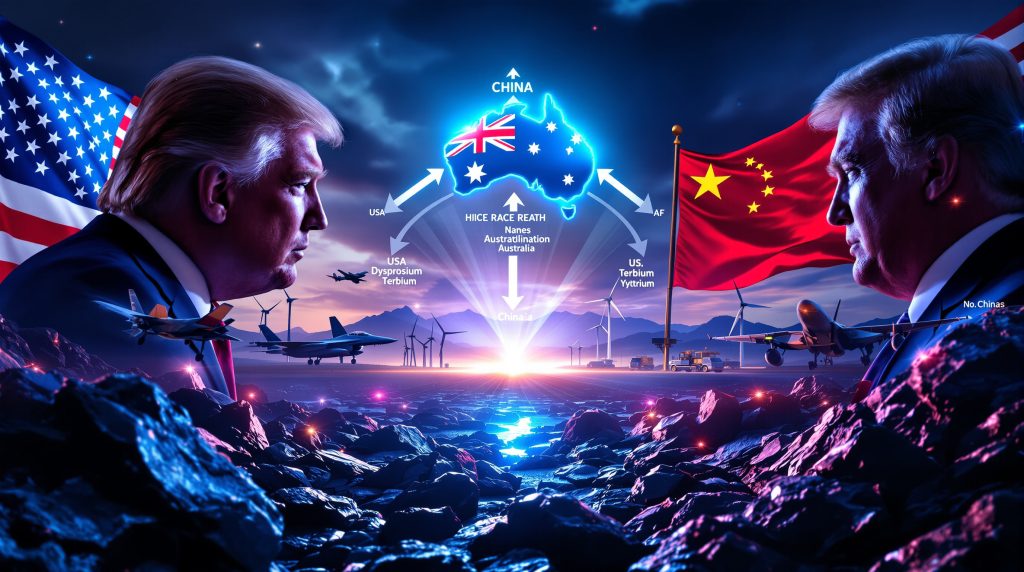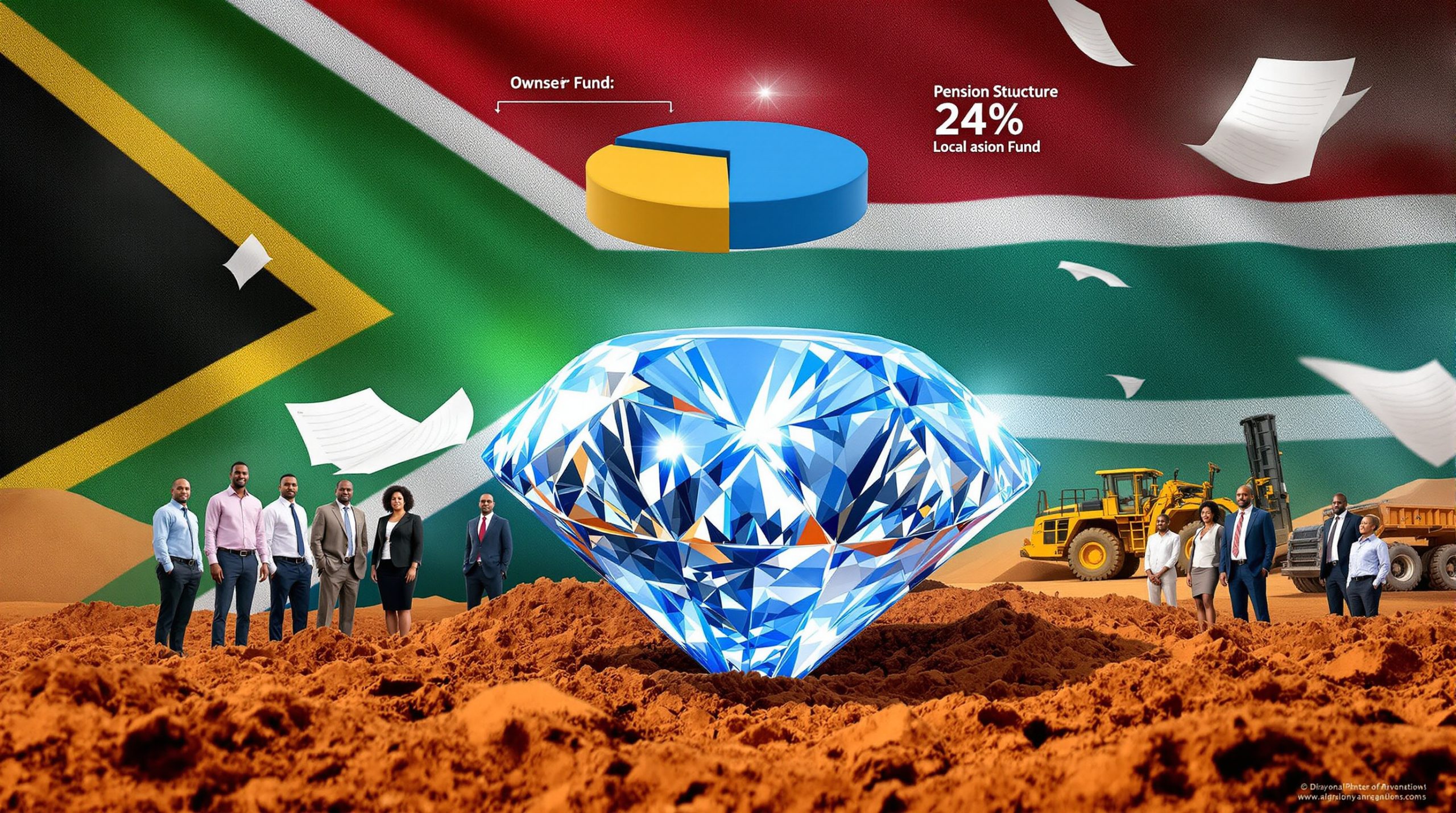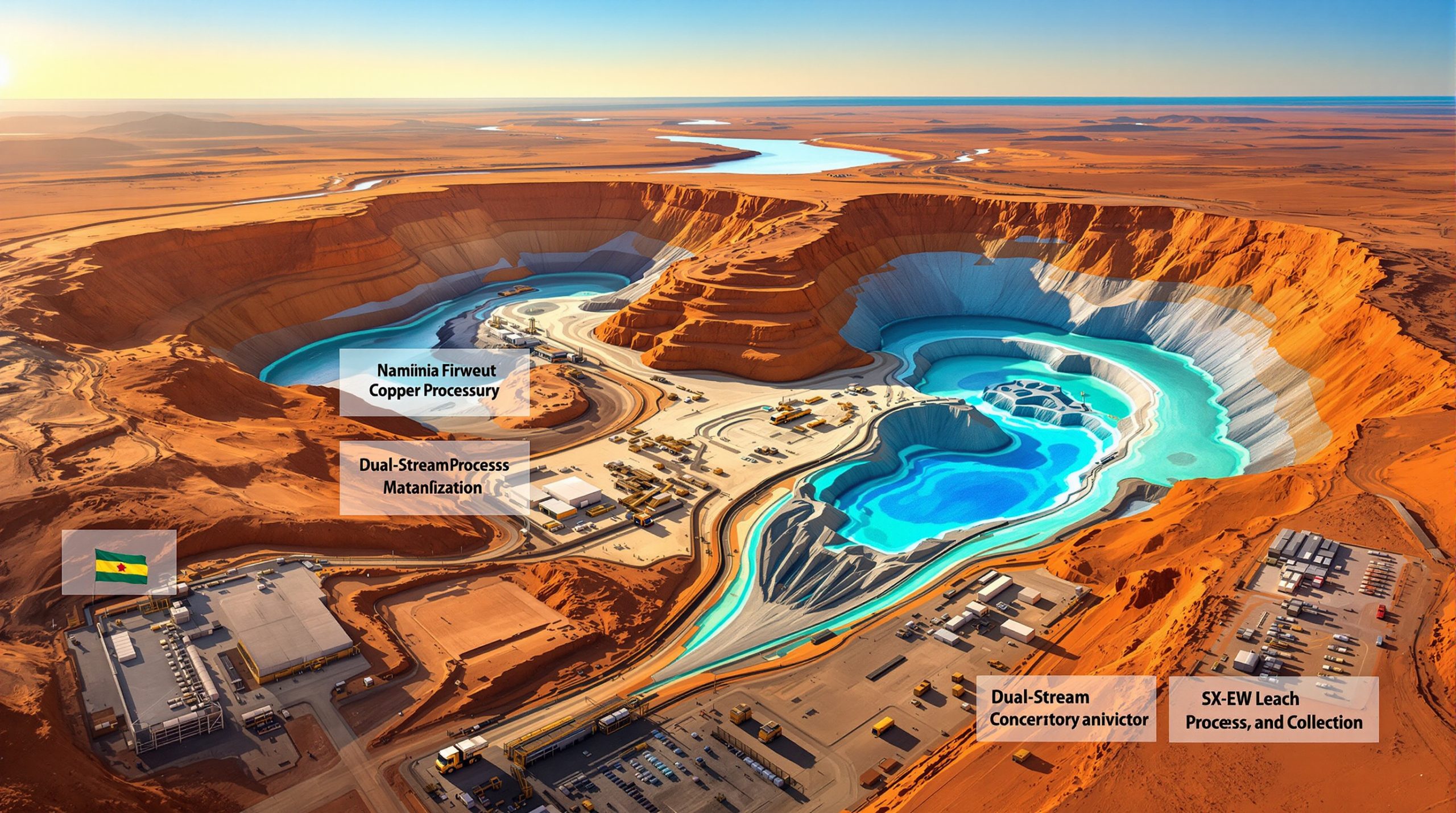The New Global Rare Earth Crisis: How Trade Tensions Are Reshaping Critical Mineral Supply Chains
The global rare earth market faces unprecedented disruption as geopolitical tensions escalate between major economies. Recent trade policy announcements signal a potential 100% tariff on Chinese imports, while Beijing has responded with comprehensive export controls on rare earth materials designated for military applications. This tit-for-tat escalation represents the most significant disruption to raw material supply chain since the 2010 rare earth crisis.
The current situation creates both challenges and opportunities for countries with undeveloped rare earth deposits, particularly Australia, which hosts significant heavy rare earth resources that could help Western nations reduce dependence on Chinese supplies.
Why Rare Earth Elements Matter in Modern Technology and Defense
The Critical Role of Rare Earths in Advanced Applications
Rare earth elements (REEs) comprise a group of 17 metals with unique magnetic, luminescent, and electrochemical properties. Despite their name, most rare earths are relatively abundant in Earth's crust, but economically viable deposits remain scarce.
According to the U.S. Geological Survey, these elements form the backbone of numerous advanced technologies despite their relatively low production volume compared to other industrial metals. Their irreplaceable properties make them essential components in applications ranging from consumer electronics to sophisticated military systems.
Key Applications Driving Strategic Importance
-
Defense Systems: Precision-guided munitions, radar components, night vision equipment, and satellite communications rely heavily on defense-critical materials
-
Renewable Energy: Wind turbine permanent magnets require up to 600kg of rare earth materials per typical 3-megawatt installation, according to the International Energy Agency
-
Electric Vehicles: Each EV motor contains approximately 1-2kg of rare earth permanent magnets, primarily neodymium, praseodymium, and dysprosium
-
Medical Technology: Advanced imaging equipment including MRI machines utilize rare earth contrast agents and superconducting magnets
-
High-Tech Manufacturing: Semiconductors, lasers, fiber optics, and high-performance electronics depend on various rare earth elements
The Most Critical Heavy Rare Earths Under Restriction
The latest export controls specifically target seven strategically vital heavy rare earth elements:
| Element | Key Applications | Strategic Significance |
|---|---|---|
| Dysprosium | Permanent magnets, nuclear reactors | Essential for defense systems and high-temperature stable magnets in EV motors |
| Terbium | Phosphors, solid-state devices | Critical for precision optics, sonar systems, and display technologies |
| Gadolinium | MRI contrast agents, nuclear reactors | Crucial for medical imaging and neutron absorption in nuclear applications |
| Samarium | Samarium-cobalt magnets | Provides temperature stability in aerospace magnets and military applications |
| Yttrium | Phosphors, ceramics, metal alloys | Enables advanced defense electronics, quantum computing, and laser technologies |
| Lutetium | Catalysts, PET scanners | Powers next-generation medical imaging technology and high-refractive glass |
| Scandium | Aluminum alloys, solid oxide fuel cells | Strengthens aerospace materials and enhances next-generation energy systems |
How China Established Global Dominance in Rare Earth Supply
China's Strategic Rare Earth Development (1980s-Present)
China's dominance in the rare earth sector resulted from deliberate strategic planning. Beginning in the 1980s, the Chinese government identified rare earths as a strategic resource and invested heavily in exploration, extraction, and processing capabilities.
According to a Congressional Research Service report, China's rare earth industry development was supported by government policies including subsidized mining operations and relaxed environmental regulations that allowed lower production costs compared to Western producers.
Current Market Control Statistics
-
Mining Production: Controls approximately 70% of global rare earth mining output, according to the latest U.S. Geological Survey data (2024)
-
Processing Capacity: Dominates 85-90% of global rare earth processing and refining infrastructure
-
Magnet Manufacturing: Produces nearly 90% of global rare earth permanent magnets
-
Supply Chain Integration: Maintains the world's only fully integrated mine-to-magnet supply chain at industrial scale
Previous Uses of Rare Earths as Geopolitical Leverage
This isn't the first time China has wielded rare earths as a geopolitical tool. In September 2010, during a territorial dispute with Japan over the Senkaku/Diaoyu Islands, China restricted rare earth exports, causing prices to skyrocket by up to 1,400% for some elements.
The New York Times documented how these restrictions created severe manufacturing disruptions in Japan's high-tech industry. The current export controls represent a more sophisticated and targeted approach, focusing specifically on materials with military applications rather than blanket export reductions.
Understanding the New Chinese Export Restrictions
Timeline of Escalating Trade Tensions
The recent developments in the rare earth market follow a pattern of escalating trade tensions:
-
Historical Context: Trade tensions have periodically escalated since 2018, with rare earth materials repeatedly identified as strategic leverage points
-
Industry Response: Major technology manufacturers began diversifying supply chains following previous rare earth supply disruptions
-
Current Developments: New export control regulations specifically target materials with military applications
Specific Restrictions and Control Mechanisms
The new export controls include multiple mechanisms designed to restrict access to critical materials:
-
Dual-use licensing requirements: Companies must obtain special licenses for rare earth materials with potential military applications
-
Military end-user restrictions: Automatic rejection of export applications for military users
-
Watchlist system: Enhanced scrutiny for companies on China's "unreliable entity list"
-
Processing restrictions: Export limitations on certain refined rare earth products including alloys and magnets
-
Material-specific controls: Particular focus on samarium, dysprosium, gadolinium, terbium, lutetium, scandium, and yttrium metals, along with key alloys and oxides
Impact on Global Technology Supply Chains
These restrictions create cascading effects throughout global supply chains:
-
Defense sector vulnerabilities: Military contractors face potential component shortages for guided weapons systems, radar technology, and communications equipment
-
Manufacturing bottlenecks: Electric vehicle producers must navigate magnet shortages that could delay production timelines
-
Research limitations: Advanced technology companies may encounter obstacles developing next-generation devices that require restricted materials
-
Price volatility: Market uncertainty drives significant price fluctuations across the rare earth value chain
Australia's Potential to Fill the Supply Gap
Australia's Rare Earth Resource Potential
Australia possesses world-class rare earth deposits that could help reduce Western dependence on Chinese supplies. According to Geoscience Australia, the country's Economic Demonstrated Resources for rare earth oxides total approximately 4 million tonnes.
The country's geological advantages include:
-
Diverse deposit types: Both hard rock (monazite, bastnäsite) and clay-hosted ionic adsorption rare earth resources
-
Heavy rare earth enrichment: Particularly high concentrations of the most critical heavy rare earths in certain deposits
-
Processing potential: Growing capacity to develop complete mine-to-magnet domestic supply chains with government support
Key Australian Rare Earth Projects and Their Significance
Several Australian projects are positioned to help address supply chain vulnerabilities:
-
North Stanmore project: Recently reported the highest grades of dysprosium in clay deposits in Australia, according to Victory Metals
-
Mount Weld: One of the world's richest rare earth deposits outside China, operated by Lynas Rare Earths
-
Browns Range: Australia's first heavy rare earths project, focused on dysprosium and terbium production
-
Nolans Project: Advanced rare earths project with significant neodymium and praseodymium resources in the Northern Territory
Advantages of Australian Clay-Hosted Deposits
Clay-hosted rare earth deposits offer several advantages over traditional hard rock mining:
-
Lower capital requirements: Less expensive processing infrastructure compared to hard rock operations
-
Faster development timelines: Simplified extraction processes can accelerate project development schedules
-
Simpler processing: Often require less complex and less energy-intensive extraction techniques
-
Higher heavy rare earth content: Frequently contain higher percentages of the most critical elements needed for advanced applications
Implications for Global Defense and Technology Industries
Critical Defense Systems at Risk
The restrictions threaten production of numerous defense systems reliant on rare earth components:
-
Precision-guided munitions: Require rare earth magnets for steering and guidance mechanisms
-
Night vision equipment: Depends on rare earth phosphors for image intensification and visual clarity
-
Radar and sonar systems: Utilize rare earth materials for signal processing and detection capabilities
-
Communication systems: Incorporate rare earth components for signal amplification and transmission
According to U.S. Congressional Research Service reports, the Department of Defense uses rare earths in "permanent magnets for motors and actuators in missiles, aircraft, and ground vehicles."
Technology Sector Vulnerabilities
Beyond defense applications, numerous civilian technologies face supply chain disruptions:
-
Electric vehicle production: Global EV sales reached 13.6 million units in 2023 (BloombergNEF), with growth targets now threatened by potential rare earth shortages
-
Renewable energy deployment: Wind power capacity reached 1,021 GW globally by end of 2023 (Global Wind Energy Council), with approximately 20% of wind turbines using permanent magnet generators containing rare earths
-
Consumer electronics: Smartphones, computers, and other devices face component shortages and potential cost increases
-
Medical equipment: Advanced imaging and diagnostic tools could see limited availability and rising prices
Strategic Responses from Western Nations
Western countries are pursuing multiple strategies to address rare earth vulnerabilities:
-
Supply diversification: Investing in rare earth projects outside China, particularly in Australia, Canada, and the United States
-
Stockpiling initiatives: Building Australia minerals reserve of critical materials through government-sponsored programs
-
Recycling development: Enhancing technologies to recover rare earths from electronic waste, though current recovery rates remain below 1% according to the United Nations Environment Programme
-
Alternative materials research: Funding research for rare earth substitutes in critical applications, with focus on reducing dysprosium and terbium dependence
How Global Manufacturers Are Adapting to Supply Chain Risks
Supply Chain Restructuring Strategies
Companies dependent on rare earth materials are implementing various adaptation strategies:
-
Vertical integration: Acquiring stakes in mining and processing operations to secure direct material access
-
Long-term supply agreements: Negotiating guaranteed offtake contracts with emerging non-Chinese suppliers
-
Product redesigning: Modifying designs to reduce or eliminate rare earth content where technically feasible
-
Geographical diversification: Establishing manufacturing facilities in multiple regions to mitigate supply disruption risks
Case Studies of Adaptation Approaches
Several companies have already taken proactive steps:
-
Automotive sector: Tesla has announced efforts to reduce rare earth usage in motors through innovative electromagnetic designs
-
Defense contractors: Major aerospace companies are researching alternative technologies that reduce dependence on the most restricted elements
-
Electronics manufacturers: Leading consumer electronics producers are modifying component specifications to minimize use of vulnerable materials
The Economic Impact of Supply Chain Disruption
The economic consequences of rare earth restrictions are substantial across multiple sectors:
-
Manufacturing cost implications: Component prices for certain rare earth-dependent parts have already increased
-
Production scheduling challenges: Complex technology products face potential timeline disruptions
-
Investment uncertainty: Capital allocation becomes more difficult amid supply chain instability
-
Innovation constraints: Research and development priorities shift toward material substitution rather than performance enhancement
The Future of Global Rare Earth Supply Chains
Projected Timeline for Supply Chain Reorganization
Developing alternative rare earth supply chains will require sustained investment and patience:
-
Short-term (1-2 years): Market volatility and price spikes for key materials as existing inventories diminish
-
Medium-term (3-5 years): Initial production from new mining projects, primarily in Australia, Canada, and the United States
-
Long-term (5+ years): Establishment of more diversified global supply chains with reduced Chinese market share
The Growing Role of Recycling and Urban Mining
Recovering rare earths from existing products will play an increasing role:
-
Current recovery rates: Less than 1% of rare earths are currently recycled, according to the United Nations Environment Programme
-
Emerging technologies: New processes under development could significantly improve recovery rates from electronic waste
-
Urban mining potential: Landfills and electronic waste streams represent significant untapped resources of critical materials
-
Economic viability: Rising prices improve the financial case for recycling operations previously considered uneconomical
Potential for New Geopolitical Alliances Around Critical Minerals
The rare earth crisis is reshaping international relationships and creating new partnerships:
-
Australia-US-Japan-EU collaborations: Forming strategic frameworks for resource development and processing capacity
-
Resource nationalism: Countries increasingly view mineral resources through a national security lens rather than purely economic terms
-
Investment patterns: Government funding and strategic partnerships flowing into previously marginal projects now deemed critical
Investment Considerations in the Rare Earth Sector
Investment Opportunities in the Rare Earth Value Chain
The restructuring of rare earth supply chains creates various investment opportunities:
-
Junior mining companies: Exploration and development-stage rare earth projects with proven resources
-
Processing technology firms: Companies developing innovative separation and refining techniques that reduce environmental impact
-
Recycling ventures: Businesses focused on rare earth recovery from waste streams and end-of-life products
-
Magnet manufacturing: Companies establishing non-Chinese production capacity for high-performance permanent magnets
Risk Factors to Consider Before Investing
Investors should carefully evaluate several risk factors:
-
Technical challenges: Rare earth processing involves complex separation of chemically similar elements
-
Regulatory hurdles: Environmental permitting for rare earth processing faces increasing scrutiny in Western jurisdictions
-
Market volatility: Prices can fluctuate dramatically based on geopolitical developments and policy changes
-
Chinese response: Potential for strategic price manipulation to undermine economic viability of new projects
Long-term Outlook for Rare Earth Markets
The long-term trajectory for rare earth markets suggests:
-
Sustained demand growth: Increasing adoption of electric vehicles and renewable energy ensures growing material requirements
-
Increased supply diversity: Gradual reduction in Chinese market dominance as new projects come online
-
Technology adaptation: Development of designs requiring fewer critical elements or utilizing alternative materials
-
Pricing normalization: After initial volatility, more stable pricing as supply chains diversify and mature
Understanding the Rare Earth Market: Key Questions Answered
What exactly are rare earth elements and why are they important?
Rare earth elements are a group of 17 metals with unique properties that make them essential for technologies ranging from smartphones to missile guidance systems. According to the U.S. Geological Survey, these elements include the 15 lanthanides plus scandium and yttrium.
Despite their name, most are relatively abundant in Earth's crust, but economically viable deposits are scarce. Their unique magnetic, luminescent, and electrochemical properties make them irreplaceable in many high-tech applications.
Why does China dominate the rare earth market?
China recognized the strategic importance of rare earths decades ago and invested heavily in exploration, extraction, and processing capabilities. The U.S. Geological Survey reports that China produces approximately 70% of global rare earth mining output.
Through a combination of favorable geology, government support, and technical expertise, China established comprehensive control over the global supply chain. The country's dominance extends beyond mining to include 85-90% of processing capacity and nearly 90% of magnet manufacturing.
Can recycling solve the rare earth supply problem?
While recycling will play an increasing role, current recovery rates remain below 1% according to the United Nations Environment Programme. Technical challenges in separating rare earths from complex products make recycling difficult and expensive.
However, as prices increase and technology improves, recycling will become more economically viable. Emerging processes show potential to recover up to 90% of certain rare earths from electronic waste, but widespread implementation remains years away.
How long will it take to develop alternative supply chains?
Establishing complete non-Chinese supply chains requires addressing multiple challenges throughout the value chain. Mining projects typically require several years from discovery to production, while developing processing capacity adds additional time.
Greenland critical minerals and Australia's clay-hosted deposits offer potential for faster development compared to traditional hard rock projects. With favorable geology, simplified processing requirements, and government support, these projects could potentially begin production within 3-5 years.
What can consumers expect as a result of these supply chain disruptions?
Consumers may notice several effects as rare earth supply chains adapt:
-
Price increases: Products dependent on rare earth materials, such as smartphones, computers, and electric vehicles, may see modest price increases
-
Product availability: Temporary shortages of certain high-tech products are possible as manufacturers adjust supply chains
-
Design changes: Consumer electronics may evolve to use alternative materials or technologies that reduce rare earth dependence
-
Manufacturing relocations: Production of rare earth-dependent goods may shift to regions with more secure supply access
A Pivotal Moment for Global Critical Mineral Supply Chains
The escalating trade tensions have transformed rare earth elements from obscure industrial materials into critical geopolitical assets. The decision to restrict exports of these vital materials represents both a challenge and an opportunity for countries like Australia that possess significant undeveloped rare earth resources.
As global supply chains reorganize in response to these restrictions, we can expect accelerated development of non-Chinese rare earth sources, increased investment in recycling and alternative technologies, and a fundamental reassessment of critical minerals energy security in Western defense and technology sectors.
The coming years will be characterized by supply uncertainty, price volatility, and strategic competition as nations and corporations race to secure access to these irreplaceable materials that underpin modern technology and defense systems.
Disclaimer: This article contains forward-looking statements and predictions about rare earth markets and supply chains. Such statements involve risks and uncertainties, and actual outcomes may differ materially from those discussed. Readers should conduct their own research before making investment decisions related to rare earth markets.
Want to Capitalise on the Next Major Mineral Discovery?
Stay ahead of market-moving ASX announcements with Discovery Alert's proprietary Discovery IQ model that instantly identifies significant mineral discoveries, turning complex geological data into actionable investment insights. Explore how historic discoveries have generated substantial returns by visiting the dedicated discoveries page and begin your 30-day free trial today.




